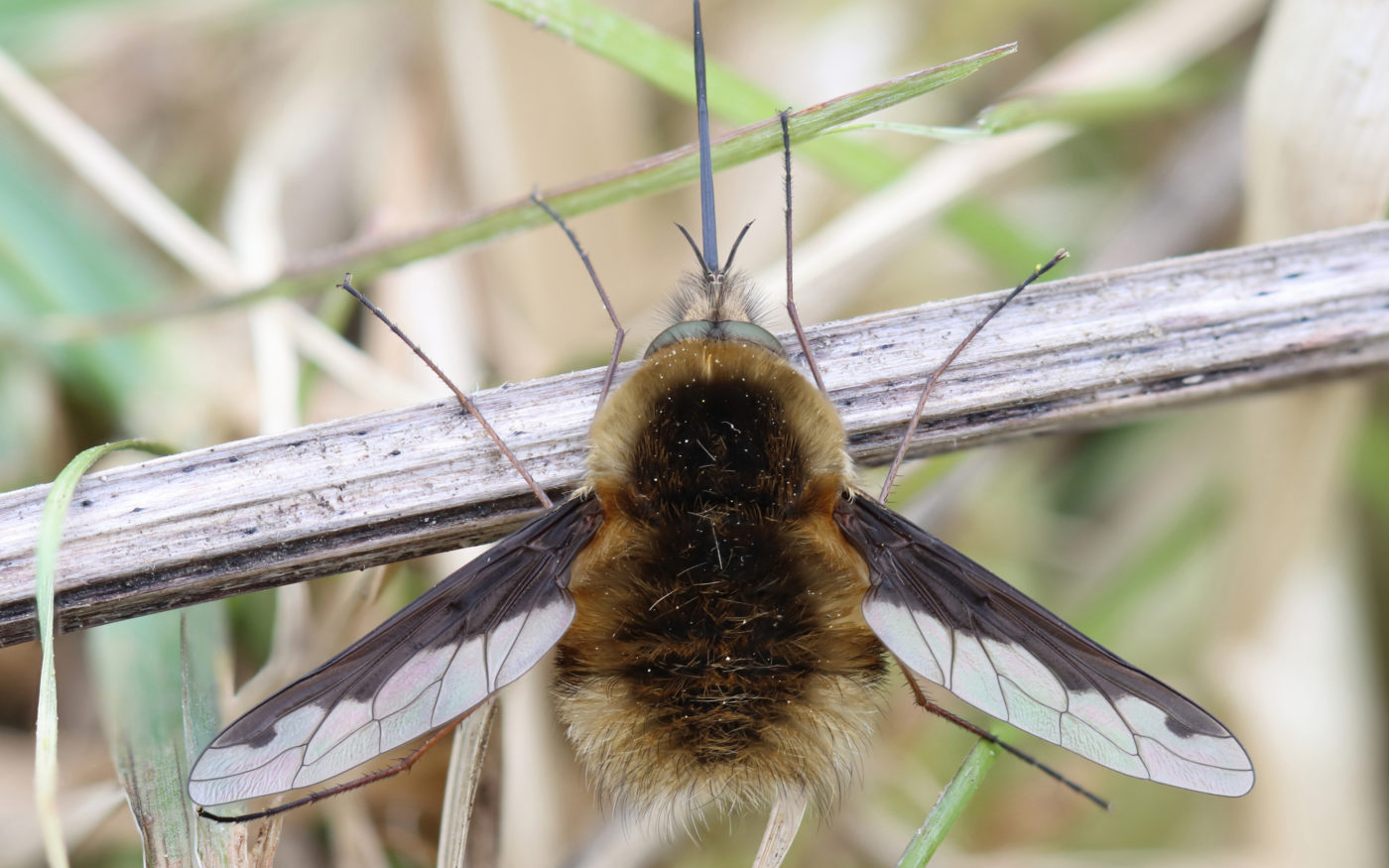Order
True flies
Family
Bombyliidae
Also known as bee flies or humble flies, the Bombyliidae family contain over 5,000 species worldwide. The adults often bare a strong resemblance to bees, hence the name, and they usually feed on nectar and pollen, making them important pollinators. The larval stages parasitise a variety of other insects such as bees, beetles, and other species of fly.
What do they look like?
These flies are easy to spot, although they are often mistaken for bees. They become easier to distinguish once you get a closer look. Dark edged bee flies have a long proboscis that protrudes from the end of its head and long skinny legs that hang below as it flies. Their body (thorax and abdomen) is covered in long orange-brown hairs and their wings are translucent with dark markings along the top edges. In flight, bee flies are nimbler than bees, often moving in a darting motion, hovering above plants in search of nectar and rarely landing. Bees on the other hand will often keep a steady pace in flight, looking clumsier, and landing on the flower to collect pollen or nectar.
Where do they live?
They can be found in many habitats, including grassland, moorland, farmland, woodland and even in towns and gardens. They are often seen in sunny patches, feeding on spring flowers, such as primroses and violets.
Where can they be found?
Dark edged bee flies are very common in throughout the UK, although they have become less common in Scotland.
When can you see them?
They can be seen flying from April until May.
Life cycle
After mating, the female will throw her eggs, using a flicking motion, next to the entrance of another insect’s nest (the host), usually a species of wasp or bee. These eggs hatch, turning into larvae. The larvae then enter the nest of the host, feeding on the food stored inside as well as the host species within the nest. Once the larvae have fed and grown to the appropriate size, they turn into a pupa and overwinter. After this, they become adults and emerge in early spring.
What do they do?
Bee flies will feed on many species of flowers, helping to pollenate them in the process.
Did you know?
If the female bee fly cannot find a host’s nest, she will lay her eggs on the plants that are frequently visited by the host. The eggs will then hatch into larvae, which wait for the host to arrive, at which point they attach themselves to the host and are carried back to their nest.

